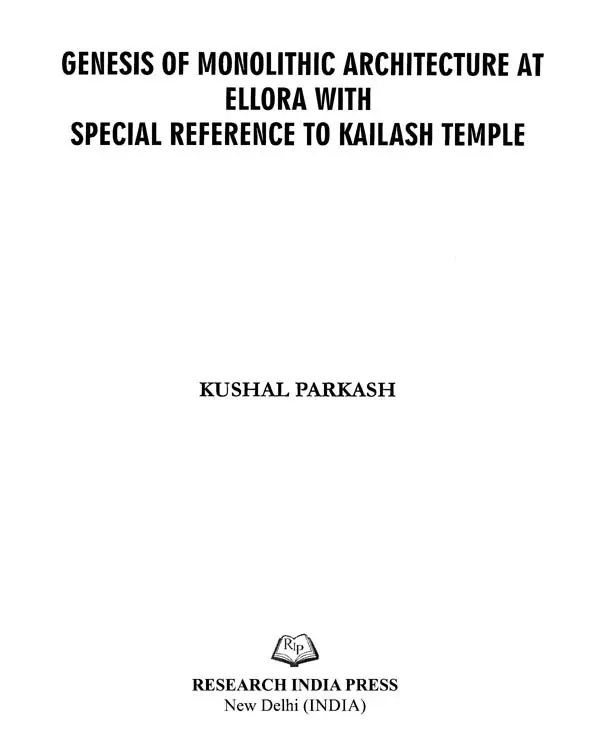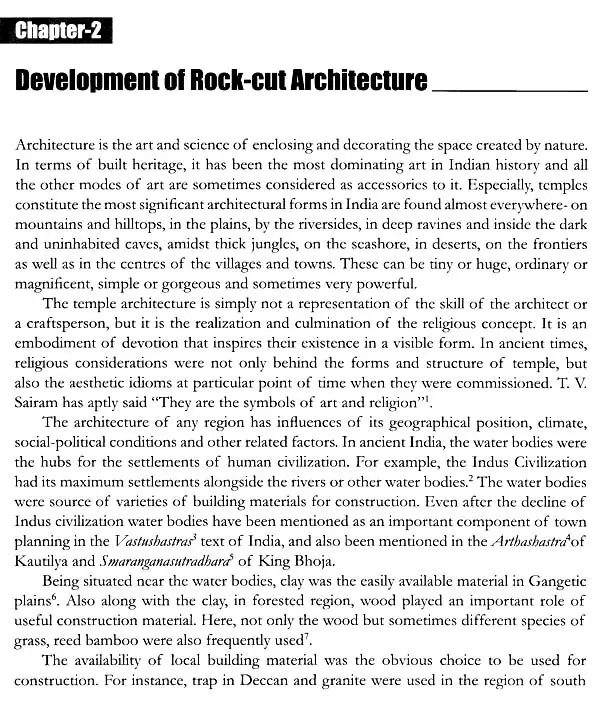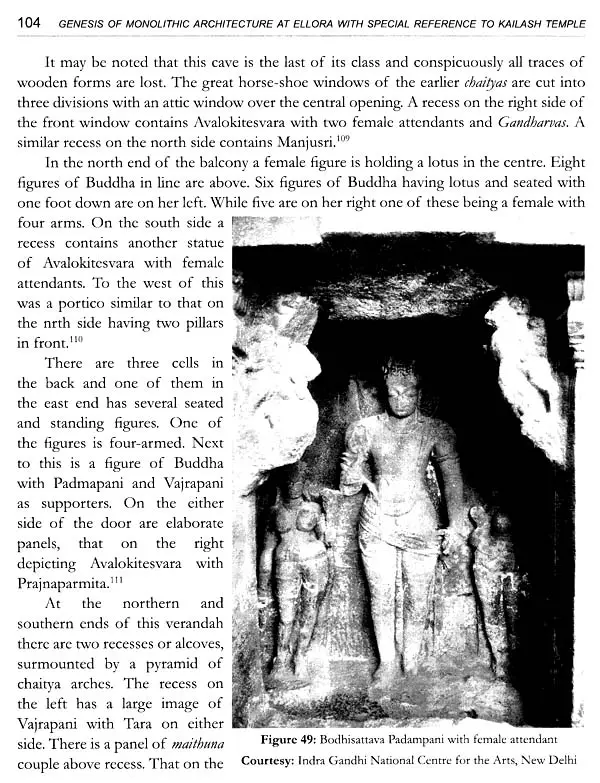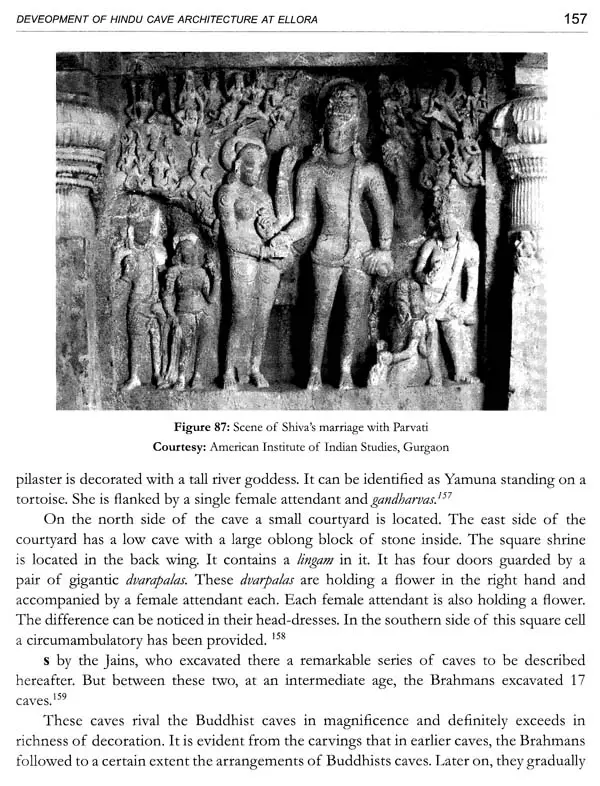
Genesis of Monolithic Architecture at Ellora with Special Reference to Kailash Temple
Book Specification
| Item Code: | UAJ601 |
| Author: | Kushal Parkash |
| Publisher: | Research India Press |
| Language: | English |
| Edition: | 2020 |
| ISBN: | 9789351711810 |
| Pages: | 282 (Throughout B/W Illustrations) |
| Cover: | HARDCOVER |
| Other Details | 11.50 X 9.00 inch |
| Weight | 1.01 kg |
Book Description
The Buddhists were the first to build caves in Western India. Their caves fall into two categories: the chaitya and vihara. Rock cut edifices are copies of structural ones, also sometimes enshrine the reliefs of some venerable Buddhist monk. They are deposited in a reliquary in a small hole cut in the dome of the stupa. Consequently the early rock-cut caves are just copies of wooden structures in stone. There were numerous wooden attachments in the early caves.
The rock-cutting activity of the Hindus starts from the sixth century and the early cave temples are located in Mumbai at Jogeshwari and the nearby island of Elephanta. Excavation work in Ellora began almost at the same time. A most noteworthy feature of Hindu cave temples is that they are richly adorned with exquisite sculptures of gods and goddesses on their walls. Monolithic architecture reaches its zenith in Ellora Cave 16 (Kailash), a lofty monolithic temple carved in a huge block of stone isolated from the surrounding hills. The Jainas too carved their cave temples at Ellora, which are not very different in concept from their Hindu counterparts.
Kushal Parkash (b.1983) did his post-graduation in Archaeology and Heritage Management from GGSIP University Delhi and Ph. D. from Kurukshetra University Kurukshetra. He joined IGNCA as Research Fellow in 2007. He has completed a number of research projects such as Intangible Cultural Heritage Safeguarding Efforts in India. He has worked at ICHCAP (UNESCO) in South Korea. He has published several research papers on tangible and intangible heritage of India. Presently he is a freelance writer.
There are the 1200 rock-cut caves in India. Among them about 1000 are located in western India, more particularly in the state of Maharashtra. The region is dominated by the Sahayadri hill ranges whose basalt rock is ideal for carving. The Sahayadri hills lie on a north-south axis, separating the coastal region from the mainland.
Its sub-ranges run mostly west-east. Caves have been excavated in these sub-ranges as well. Most of the caves are Buddhist, but there are a few Hindu and Jaina caves as well. The earliest rock-cut activity, however, began in the north, in Bihar, where caves were excavated in the Barabar and the Nagarjuni hills during the Mauryan period (third century BCE). The rock-cut activity then shifts to western India in Maharashtra, where the caves at Bhaja were the first to be excavated in 200 BC. The rock-cut idiom continued to flourish in Maharashtra till about the tenth century CE, after which structural temples came to be built on a large scale.
The Buddhists were the first to build caves in Western India. Their caves fall into two categories: the chaitya and vihara. Rock cut edifices are copies of structural ones, also sometimes enshrine the reliefs of some venerable Buddhist monk. They are deposited in a reliquary in a small hole cut in the dome of the stupa. Consequently, the early rock-cut caves are just copies of wooden structures in stone. There were numerous wooden attachments in the early caves.
The Buddhist rock-cut activity in western India is divisible into two phases. In the first phase (200 BCE-200 CE), the Buddha image is conspicuously absent. After a lapse of about three centuries, activity begins again and the Buddha images this time are carved. The former group belongs to the Hinayana (Lesser Vehicle) phase and the latter to the Mahayana (Greater Vehicle).
The earliest caves in western India are those at Bhaja (200 BCE), Next in order is the Kondane chaitya, which has a facade of stone pillars. At Pitalkhora and Ajanta (Cave 10), the ribs of side aisles were cut in the rock. The Bedsa cave has an elaborate facade and the pillars have capitals with human and animal figures. The Ajanta Cave 9 is rectangular on plan and the ceiling of side aisles is flat. The Karle chaitya is most impressive with animal riders as capitals and pot bases. At Nasik, there is no wooden attachment at all.
The rock-cutting activity of the Hindus starts from the sixth century and the early cave temples are located in Mumbai at Jogeshwari and the nearby island of Elephanta.
Excavation work in Ellora began almost at the same time. A most noteworthy feature of Hindu cave temples is that they are richly adorned with exquisite sculptures of gods and goddesses on their walls. Monolithic architecture reaches its zenith in Ellora Cave 16 (Kailash), a lofty monolithic temple carved in a huge block of stone isolated from the surrounding hills. The Jainas too carved their cave temples at Ellora which are not very different in concept from their Hindu counterparts.
**Contents and Sample Pages**












